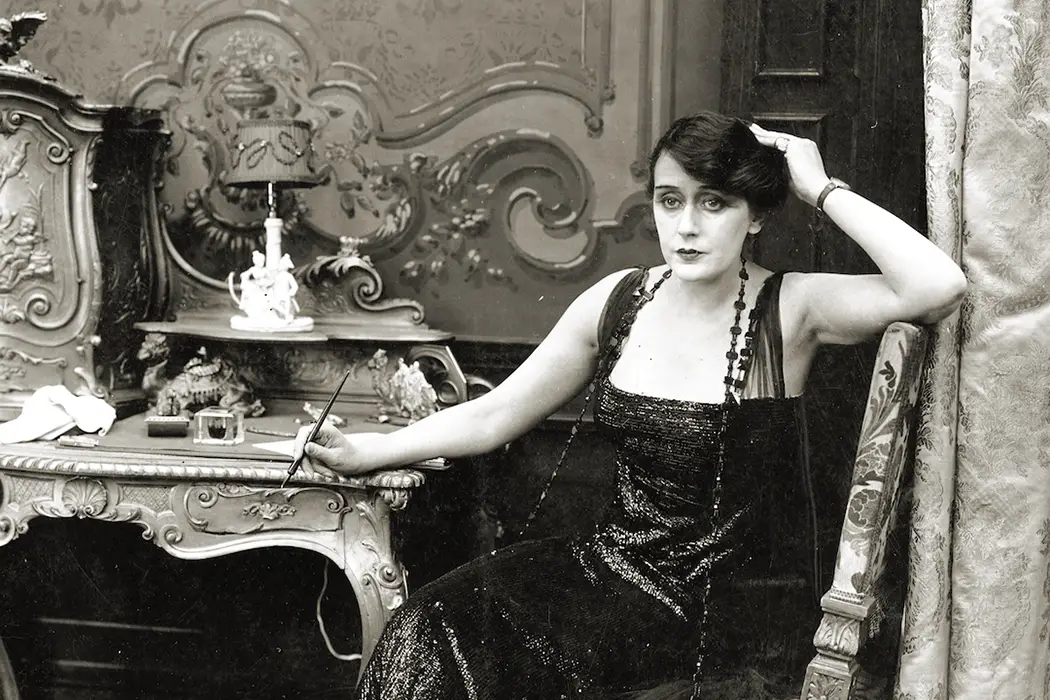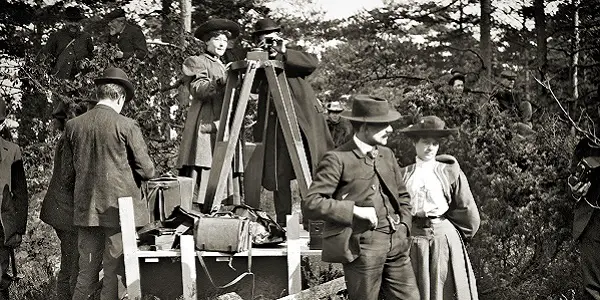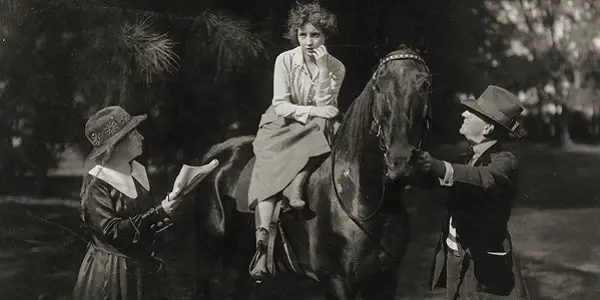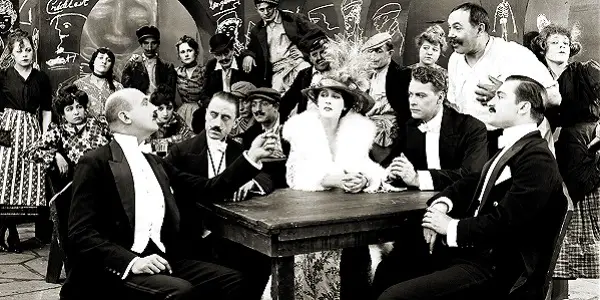BE NATURAL: THE UNTOLD STORY OF ALICE GUY-BLACHE: Paying Homage To One Of Early Cinema’s Unsung Heroes

Lee Jutton has directed short films starring a killer toaster,…
One of the most remarkable DVD releases of the past year was Kino Lorber’s Pioneers: First Women Filmmakers box set, six discs jam-packed with work from early women filmmakers who, despite their early success, largely faded into obscurity during the mid-twentieth century. The entire first disc is devoted to a filmmaker who could rightfully be called the godmother of narrative film: Alice Guy-Blaché.
Guy-Blaché was not only one of the earliest woman filmmakers; she was also one of the earliest filmmakers, period, and helped pioneer aspects of narrative storytelling on film that persist to this day. She wrote, produced or directed 1,000 films, including 150 with synchronized sound during what was still technically the silent era. Yet many filmmakers, scholars, and fans are wholly unfamiliar with her name.
In an effort to correct this injustice, filmmaker Pamela B. Green spent more than eight years researching Alice Guy-Blaché’s life and career, including contacting her descendants and attempting to track down her lost films. The result of Green’s admirable efforts is the new feature documentary Be Natural: The Untold Story of Alice Guy-Blaché, narrated by Jodie Foster and taking its name from the large sign that Guy-Blaché reportedly hung in her studio as a reminder to her actors. And while the documentary itself is not without flaws, there is no denying that it is important viewing for anyone interested in early cinematic history.
Back to the Beginning
The young Alice Guy was first introduced to the burgeoning art form of film through her work as secretary to inventor Léon Gaumont. When Gaumont decided to get into the business of making moving pictures – as opposed to just selling the equipment that others used to make them – Guy stepped in to lead those efforts. Guy didn’t want to just make films that documented everyday doings or promoted products; she wanted to use film to tell fictional stories. The result was what many consider to be the first-ever narrative film, The Cabbage Fairy, an 1896 short that has sadly been lost to the ravages of time. However, The Cabbage Fairy was just the beginning for Alice Guy.

Guy became head of production at Gaumont Film Company but had to resign upon her marriage to Herbert Blaché. Together they moved from France to the United States and soon launched The Solax Company, which began in Flushing, New York but eventually moved to Fort Lee, New Jersey. (It may surprise many to learn that Fort Lee was a hub for movie studios prior to the Hollywood boom when everyone realized it was cheaper and easier to shoot films on the West Coast.)
Some of the most memorable films Guy-Blaché made during this period include A Fool and His Money, likely the first film to feature an all African-American cast; Two Little Rangers, a Western featuring two gun-toting young women as the unlikely heroes; and Falling Leaves, a sweet little drama involving a girl whose sister is likely to die by the time the last leaf falls, leading her to run around gluing leaves back onto trees. (All of these films can be watched in full via the Pioneers: First Women Filmmakers box set.) Despite these many successes, Guy-Blaché saw her career – and shockingly, her legacy – dwindle into nothingness as men increasingly took control of the industry and shut her out. (Her own husband, who she eventually divorced, was among them.)

Unearthing History
Green explores all sides of Guy-Blaché’s professional and personal life in Be Natural, with commentary from contemporary filmmakers such as Ava DuVernay and Peter Farrelly, among many others. That’s actually part of the problem: Green devotes too much of Be Natural’s running time to footage of filmmakers who are not Alice Guy-Blaché. The beginning of the film includes a montage of clips of Hollywood luminaries being asked about Guy-Blaché and, for the most part, saying they’ve never heard of her. This gets Green’s initial thesis across pretty succinctly – why don’t the most famous people working in the movies today know more about the woman to whom they essentially owe their livelihoods? Shouldn’t we try to rectify that?
However, Green carries this conceit too far and keeps breaking up her narrative to include more of this footage, shoehorning the briefest and least-enlightening clips from Hollywood names into the film seemingly just because she can. Everyone from Andy Samberg to Ben Kingsley, Jon M. Chu to Diablo Cody, pops up in Be Natural, but very few of them actually offer any valuable insights into Alice Guy-Blaché or her work. Quality over quantity would have been a good rule to follow in regards to this footage, and that is most definitely not the case here.

Much more intriguing are Green’s attempts to track down and contact Guy-Blaché’s descendants, many of whom are somewhat in the dark as to the influence of their ancestor. Boxes of photos and films are dug out of forgotten corners in dusty basements across the United States and analyzed as to their authenticity. This in-depth detective work gives the film drive and helps fill in the blanks – of which there are far too many – in the history of this extraordinary woman. Most incredible is the rare footage of interviews with Guy-Blaché herself as an older woman, in which she reflects on her career and how it felt to be frozen out of the industry that she helped create.
And, of course, enough cannot be said about the opportunity to actually see Guy-Blaché’s work, so much of which we long thought was lost forever. Sadly, there are some Guy-Blaché films that we’ll likely never get to see – film was just not preserved in the early 20th century the way it is today – but even the smallest glimpse of her work confirms what a magical talent she was, and how much contemporary cinema is in debt to her trailblazing work.
Be Natural: Conclusion
Be Natural: The Untold Story of Alice Guy-Blaché does a great service in making sure that we never again forget about Guy-Blaché’s contributions to film history, even if the film itself doesn’t equal the greatness of its subject.
What do you think? Do you want to learn more about Alice Guy-Blaché? Share your thoughts in the comments below.
Be Natural: The Untold Story of Alice Guy-Blaché was released in Los Angeles on April 19, 2019 and was released in New York on April 26, 2019. You can find more international release dates here.
Does content like this matter to you?
Become a Member and support film journalism. Unlock access to all of Film Inquiry`s great articles. Join a community of like-minded readers who are passionate about cinema - get access to our private members Network, give back to independent filmmakers, and more.
Lee Jutton has directed short films starring a killer toaster, a killer Christmas tree, and a not-killer leopard. Her writing has appeared in publications such as Film School Rejects, Bitch: A Feminist Response to Pop Culture, Bitch Flicks, TV Fanatic, and Just Press Play. When not watching, making, or writing about films, she can usually be found on Twitter obsessing over soccer, BTS, and her cat.













